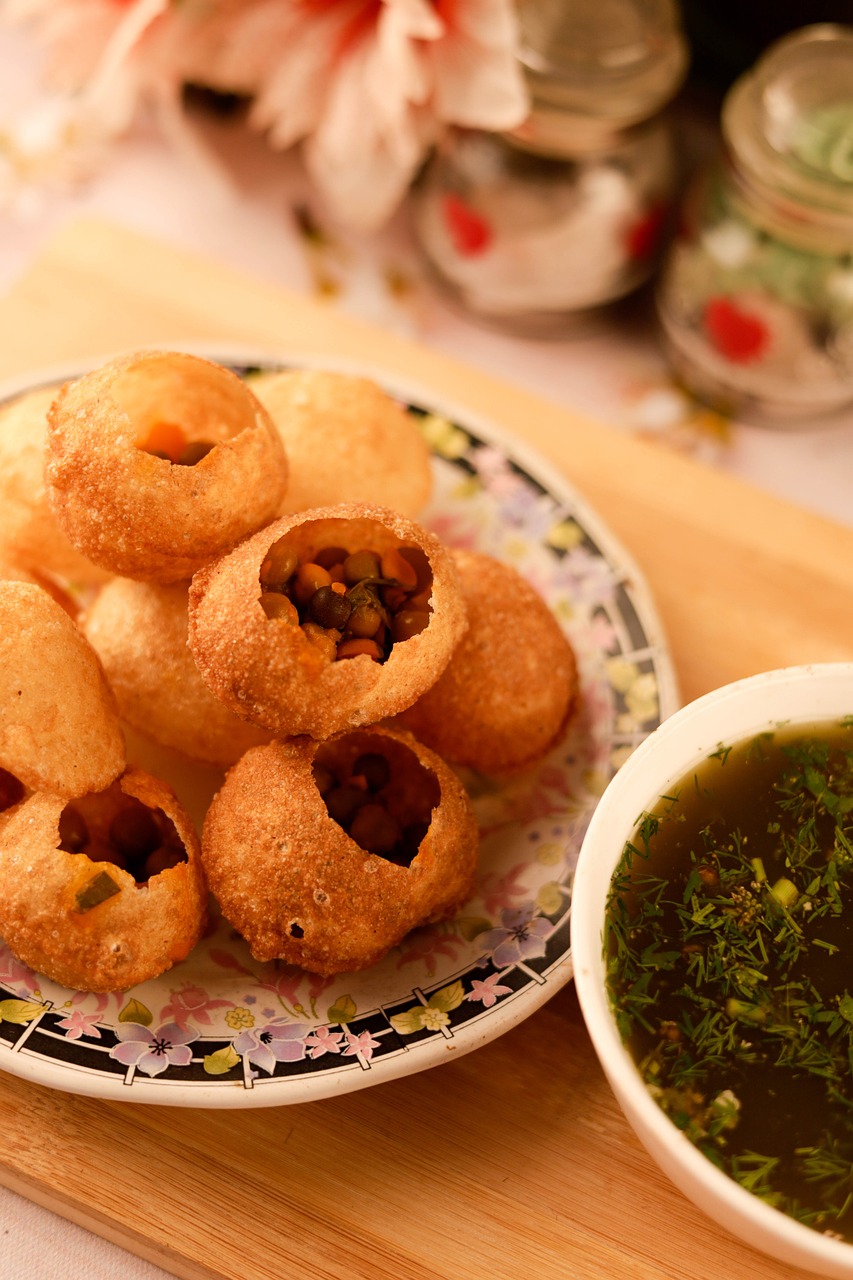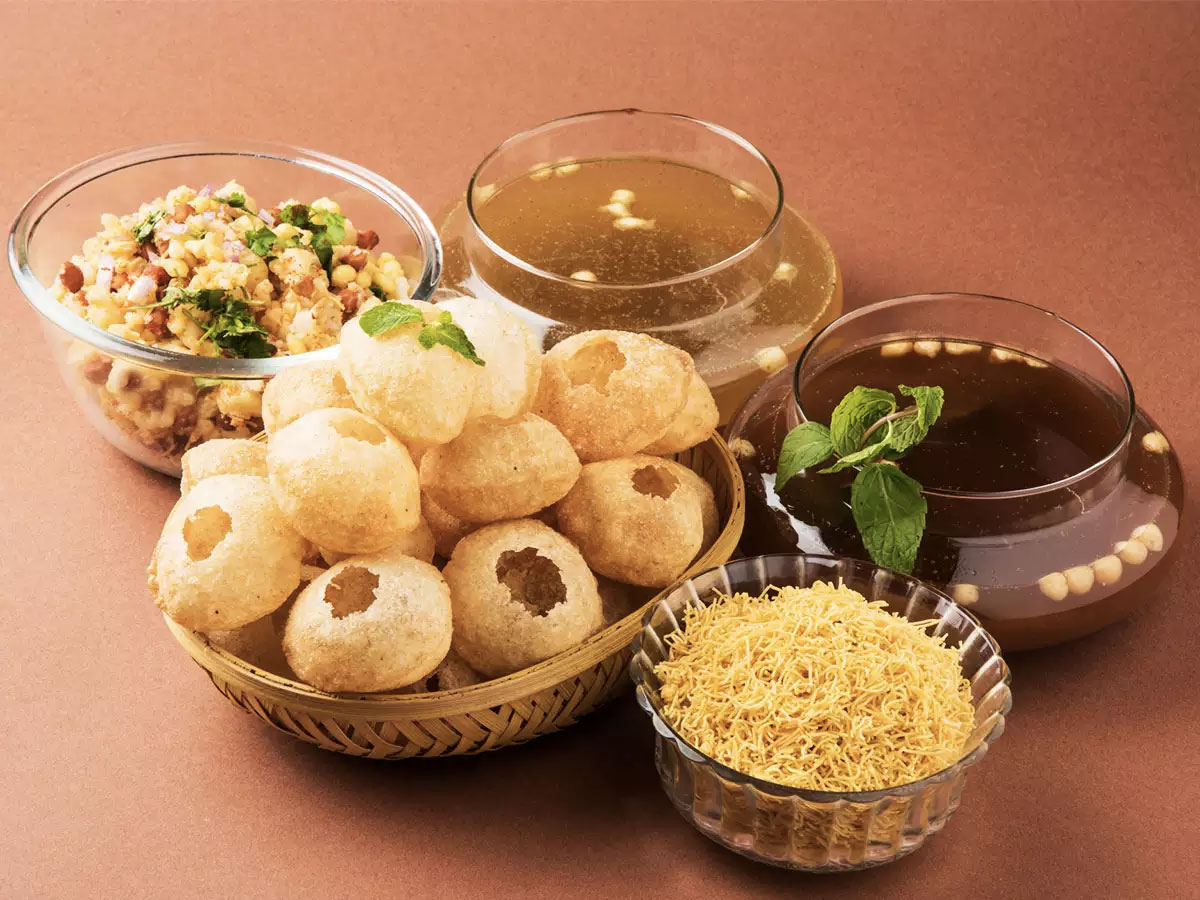A Culinary Journey of Flavors and Spices
Chaat Of India

Indulge in the Authentic Tastes of India’s Street Food Culture, Where Every Bite Tells a Story

Chaat Of India
Chaat or chāt (lit. ’tasting, delicacy’) is a family of savoury snacks that originated in India, typically served as an hors d’oeuvre or at roadside tracks from stalls or food carts across South Asia in India, Pakistan, Nepal and Bangladesh.With its origins in Uttar Pradesh, India, chaat has become immensely popular in the rest of South Asia and the Caribbean.
There are those who say the word chaat originated from its literal meaning ‘to lick’. It was so delicious that people licked their fingers and the bowl made of peepal leaves, called donas, in which it is often served. Others think it originated from the term chatpati (tangy).
However, no one truly knows the origin. Adventurism at its best! One story goes thus, the reign of Emperor Shah Jahan, in the 16th Century, there was an outbreak of cholera. Desperate attempts were made to control it by physicians and sorcerers. One remedy suggested was to make food with loads of spices so that it would kill the bacteria within. Thus was born the spicy tangy chaat , which the entire populace of Delhi is believed to have consumed. And hence the love affair of Delhi with Chaat.
A Perfect Menu for Every Budget
- Aloo Chaat
- Pani Puri
- Pav Bhaaji
- Aloo Chaat
- Pani Puri
- Pav Bhaaji
- Sev Puri
- Lilva Kachori Chaat
- Mixed Sprouts Chaat
- Aloo Chaat
- Pani Puri
- Pav Bhaaji
- Sev Puri
- Lilva Kachori Chaat
- Mixed Sprouts Chaat
- Dahi Bhalle
- Chole Bhature
- Chola Samosa Chaat
- Moongs Sprouts & Potato Challi Chaat
All types of Chaat customised as per requirement.

Bhaiya, thoda aur paani dena!
A slight variant attributes it to the court physician called Hakim Ali, who realised that the foul water in a defunct local canal could result in serious water-borne diseases and thought the only way to prevent it was to add a liberal dose of spices — tamarind, red chillies, coriander, mint etc to the food.
Hence, the food came to be called chatpati (tangy).
The papdi finds a mention in Mânasollasa in the 12th Century as purika. The description fits the present-day papdi which is fried crisp with the addition of cumin seeds and ajwain, using chickpea flour, maida or wheat flour and not puris.
The use of rock salt or sendha namak and black salt with chaat is common. Aloo or potato cubes, fried in oil, is spiced up using a combination of salts, which also have ancient origins.
Mahabharata refers to the use of rock salt or sendha namak and black salt. It is also mentioned in the Buddhist Vinaya Pitaka and by Charaka.
The tale of paani puri can be linked to chappatis . Even the cave paintings show balls of dough being made, and how, in Harappan sites, flat metal and clay plates have been seen, which look like the modern-day tava . Hence, chappatis may have a long history, and so do puris .
The Sanskrit word pura, meaning blown up, could be the genesis of the name puris . The puris and paani puris as, “tiny gol guppas , globular puris are eaten during festivals or as a roadside snack in North India with a cold, fiery, pepper-mustard liquid concoction”.
Tamarind, whose water-soaked version is the mainstay of panipuris today, was grown in India in prehistoric times. Tamar-ul-Hindi — fruit of India — is how it was referred to by the Arabs and Marco Polo refers to it in 1298 AD as tamarindi.
In Indian Food: A Historical Companion , KT Achaya mentions Sādava from the Buddhist era, which connotes either a spiced fruit dish or a spiced fruit drink. Ginger, cumin and cloves make their way in the Buddhist era. The Aryan era talks of black pepper ( maricha ) and asafoetida ( hing ). Spicing up water including tamarind, and fruits was prevalent.
Bhaiya, thoda aur paani dena!
